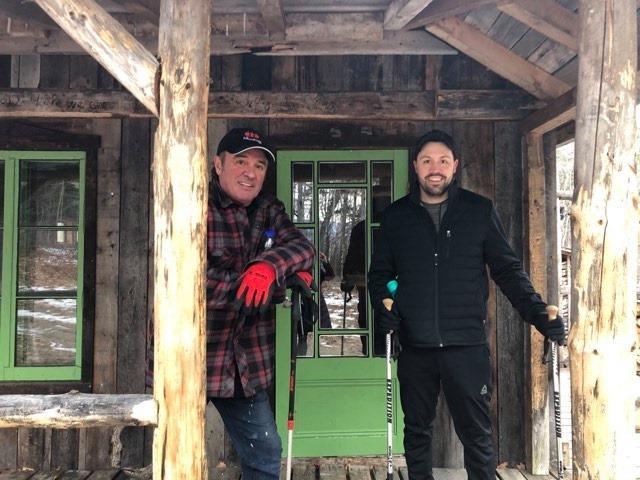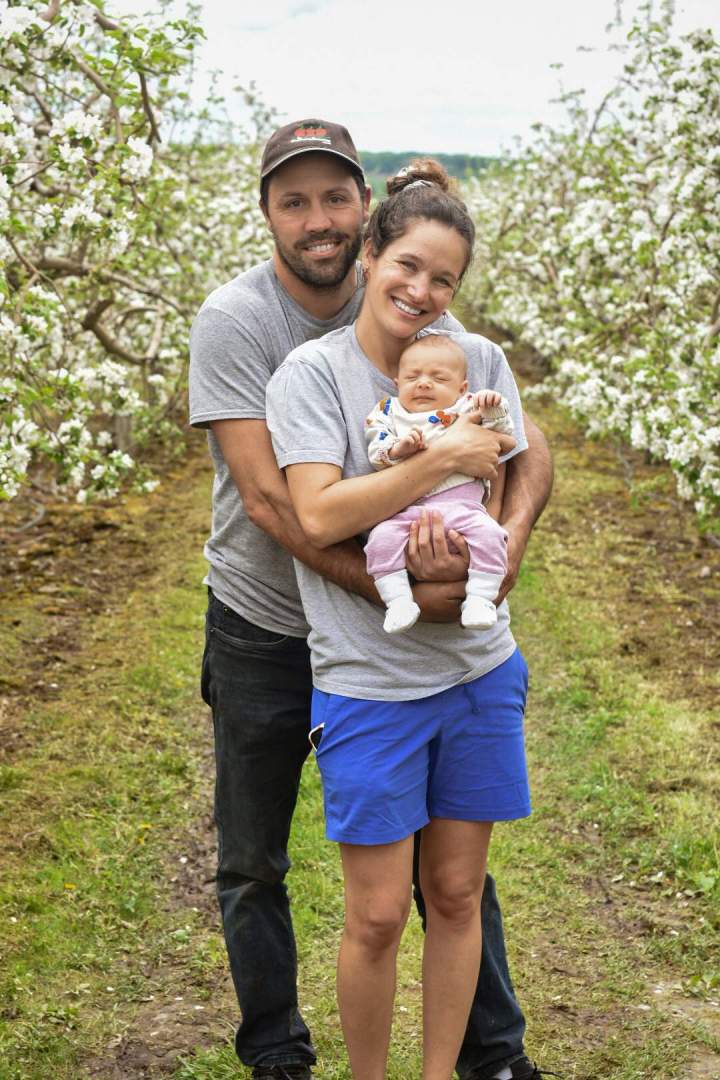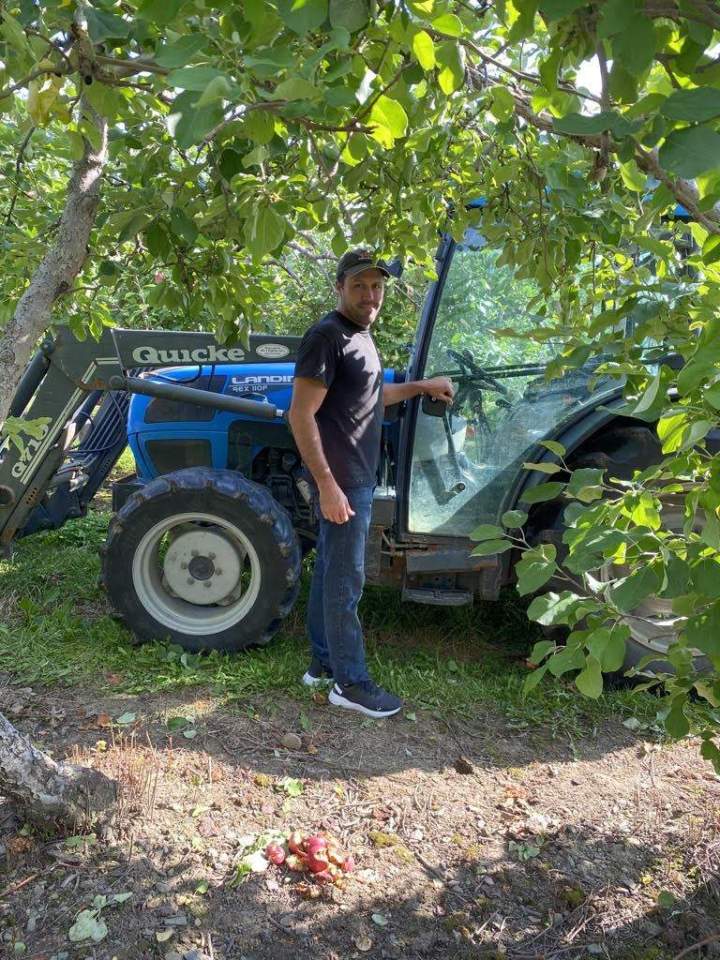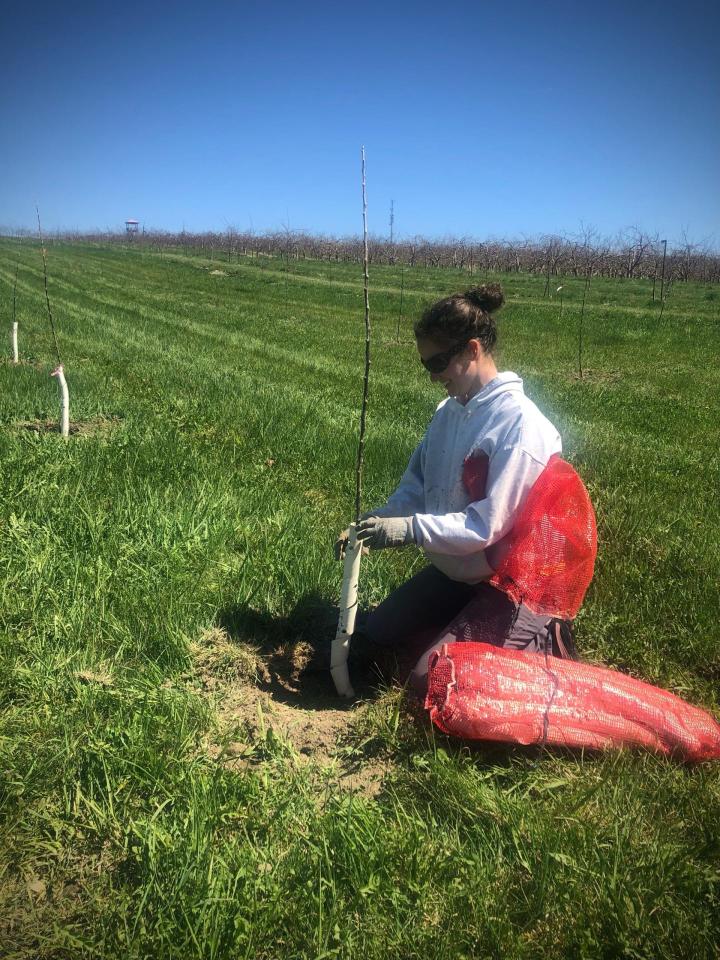Learn More – Compton
Our Story
A word from the owner
“I grew up on a farm in Coaticook. It was very enriching for me: I've always appreciated the closeness to nature. I went to “apple school” here in Compton, at Verger Gagnon, where I worked for many years.
I learned everything from Gilles, Hertel and Marcel Gagnon, guys who know apple growing and its challenges. Ubald, their father, introduced the apple to Compton in the 1930s. He was the first to see that Compton's microclimate favored this crop. It was he who paved the way for several Compton growers. It's thanks to him that in the Sherbrooke and Coaticook region, Compton = apples.
I acquired Verger La Pommalbonne in 1996. Before that, I had owned a farm for 18 years, but I finally decided to devote myself to fruit.
Today, you can still find me around the kiosk or in the orchard, caring for the health of the natural world around me, with my son David as my right-hand man. Ever mindful of the environment, we at Verger La Pommalbonne employ an approach that is as respectful of nature as possible, with the help of advisors from the Club Agroenvironnemental de l'Estrie (CAE). We work for a better environment.
I also greatly value the family atmosphere here. My son will probably be an apple grower; his grandfather and great-grandfather were apple growers. So the apple-growing tradition runs in the family. I'm sure you'll notice the warm atmosphere maintained by other members of my family who work with me.”
Germain Lafond, co-owner
Social involvement
Aware of social causes, Verger La Pommalbonne collaborates with the Rock Guertin Foundation. Every year, we organize an event in which a percentage of the proceeds from each bag of apples sold is donated directly to this foundation. The event takes place on Thanksgiving weekend. The amount distributed to this organization is over $2,000.00 per year, thanks to the generosity of our customers and our commitment!

Verger La Pommalbonne would like to thank all its customers and visitors for their generosity!

Apple grower's corner
- Welcome
- Planting Apple Trees
- Mishka Fruity Herbal Teas

Welcome to Verger la Pommalbonne.
Many of you have asked us about the various stages in the growth of apple trees and their fruit. We're delighted to share our passion for apple growing and our pride in our family business through this blog.
You'll discover different aspects of apple growing. You'll be amazed at the many tasks that have to be carried out throughout the year before you can bite into a beautiful, ripe apple. Here you'll find videos, interviews and articles on apple growing and its secrets.
We hope that sharing our knowledge will answer your questions and make it easier for budding apple growers to grow their own trees!
Happy reading.

Planting apple trees
Every year, visitors ask about their apple trees at home. Some already have some on their property, others want to plant a few to embellish their decor.
Whether you want to admire the apple blossom or grow a few apples to satisfy your stomach, there are a few tips we'd like to share with you.
Where to Grow?
Here at La Pommalbonne orchard, we plant between 150 and 625 apple trees every year. Always in spring, in late April or early May.
When the ground has thawed, it's the ideal time for the tree to start developing its root system.Since the roots are fragile at the time of planting, they will have all summer and autumn to proliferate.
This way, the tree will be well equipped to face its first winter.
Tips
Apple trees are available at most nurseries, greenhouses and garden centers.
Find out what varieties are available. Try scab-resistant cultivars for the best results in terms of fruit quality.
During the tree's first few years, remove all the apples that appear after flowering. This way, your apple tree will use its energy for branch growth rather than fruit development.
Water your tree regularly when rain is scarce, especially during the first 2 years. Apple trees are vulnerable to drought.
A light application of 10-52-10 soluble fertilizer may be recommended after planting your tree.
Installing a trunk protector is recommended to avoid damaging the bark when mowing grass.
Installing a stake to ensure that the tree grows straight is a great help to the tree's normal development.
Where to plant?
Choosing the right location for your apple trees is essential. The type of soil is very important, as apple trees are rather fickle when it comes to soil quality.
An ideal location is one where the soil is nice black, slightly sandy and irrigates naturally. Apple trees don't like their feet in water. Wet, muddy, loamy soil is not a good place for apple trees.
Choose a well-lit spot to plant your apple trees. Keep them away from any high obstacles. This will allow your trees to grow normally, and your fruit to benefit from the best possible hours of sunlight.

Myth or reality
“I planted a single apple tree on my property, and it never produced any apples, yet every spring it bursts with blossoms.” Indeed, planting a single apple tree if there are no others in the vicinity can lead to this situation. Why should this happen?
The phenomenon occurs during pollination. (Here's an easy-to-understand image of the phenomenon, because in reality, nature is a little more complex). Many varieties produce flowers of the same sex. But for proper pollination, you need pollen from flowers of both sexes.
Pollen is carried by the wind and by pollinating insects. Some varieties are self-fertile, but most are not. So the solution to avoid such a scenario would be to plant at least two apple trees, of different varieties.
April 2020 at La Pommalbonne
Cortland, HoneyCrisp, Sunrise, Paulared, McIntosh, Belmac, Ambrosia, Royal Cortland and Ginger Gold. Over 575 apple trees in 9 cultivars were planted this spring. The purpose of this planting is to rejuvenate certain rows of the orchard and complement some of the other apple tree rows planted in 2018, where several trees were unable to withstand an episode of frost during the winter of 2019.
To rejuvenate the orchard, we cut back some trees that were nearly 50 years old. They were damaged and therefore not very productive. Once the trees had been cut down, they were stumped up to leave the soil with as few obstacles as possible, so that the apple tree roots could proliferate in the soil.
A very important stage in an orchard: marking. Each variety has its own specificities. We need to calculate the distance between each apple tree and the spacing between rows. This is to optimize the number of trees in an area, to facilitate our movements without damaging the branches, and to avoid restricting the apple tree's production.
To give you an example, the Cortland apple tree will have its branches bend towards the ground like a willow. The McIntosh apple tree, on the other hand, will have branches that seek to spread wide. The spacing between apple trees should therefore be slightly greater between McIntosh trees. In the case illustrated above, between the existing rows, we can add 2 rows. We've calculated a distance of 9 feet between apple trees and 15 feet between rows.
After marking, we dig. Fortunately, we have an indispensable tool for digging over 575 holes. A screw attached to the tractor allows us to make holes more than 24 inches deep and about 16 inches wide.
This way, when the apple tree is planted, its roots will be in loose soil without too much resistance, allowing them to proliferate freely during the first year. Finally, we plant the apple trees and install a trunk protector. This protects the tree trunk against rodents and possible snags from the mowers used to cut the grass in the rows.
We then reinstall the piping for the irrigation system. Everything is in place for our apple trees to reach maturity in ten years' time... There are also other methods used in some orchards to plant apple trees. We'd like to share with you our experience gained over the years and generations. This method, which is more traditional, is the one with which we have had the highest success rate with our new apple trees. Choose the method that best suits the constraints of your land. Good luck and, above all, patience...

